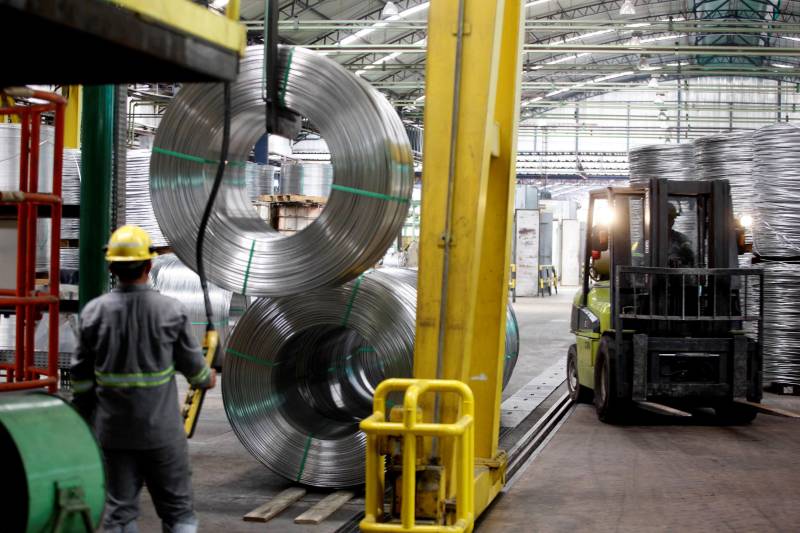GDP of Pará reaches R$ 254 billion in 2023, a growth of 7.8%
Numbers are from the Amazon Foundation for Support of Studies and Research (Fapespa), in partnership with IBGE, released this Friday (14)
The Gross Domestic Product (GDP) of Pará registered the value of R$ 254.55 billion in 2023. Influenced mainly by the positive performance of the agricultural and services sectors, the value represents a growth of 7.8% compared to the previous year. The data is presented by the Amazon Foundation for Support of Studies and Research (Fapespa), in collaboration with the Brazilian Institute of Geography and Statistics (IBGE), in the Regional Accounts report for 2023, released this Friday (14).
The analysis, prepared by the Directorate of Statistics and Technology and Information Management (DETGI) of the Foundation, addresses the GDP of Pará through significant economic data and trends, offering a detailed view of its performance in a scenario marked by economic challenges.
According to economist and researcher Rickson Oliveira, GDP is important because it provides methodologically consolidated information about Pará's GDP. "IBGE publishes the results for Brazil and other federative units. At the state level, this bulletin gathers, organizes, and clearly presents the consolidated data of Pará, allowing for an understanding of its economic performance, productive structure, the dynamics of sectors and economic activities, and its relative position in the national scenario," he explains.
Recovery and results – The GDP released this Friday indicates a recovery compared to the year 2022, which fell by 10.2%, influenced by the significant reduction in Extractive Industry activity due to the drop in production and prices of iron ore.
In 2023, GDP recovered, growing by 7.8%, still suffering impacts from the devaluation of iron prices, but was compensated by the increase in production in the state's mineral operations. Thus, the activity went from a volume contraction of -10.9% to a real growth of 3.2%.
The growth of the year was also driven mainly by the agricultural and services sectors. "The agricultural sector grew by 23% in Value Added, contributing 12.9% to Pará's economy, with highlights being the harvests of soybeans, açaí, corn, and palm oil. Cassava, in addition to having a strong volume participation, showed a significant price increase, which greatly influenced the Value Added. Furthermore, livestock remains strong, representing the second largest cattle herd in the country," explains Rickson.
The services sector acted as the leader of the state economy, representing 58.6% of Value Added and growing by 12% in 2023. The financial intermediation activity was the fastest-growing in this sector, with a growth of 24.2%. Additionally, the three activities with the highest participation in the sector were: Public Administration (40.4%), Trade, Maintenance, and Repair of Vehicles (18.4%), and Real Estate Activities (12.3%), which together accounted for 71.1% of the total Value Added of services, consolidating themselves as the main engines of the tertiary segment.
In turn, the industrial sector contributed 28.5% to the state economy and showed a nominal decline of 2.3% due to the reduction in iron ore prices, although it recorded a real growth of 1.2%. "This performance was influenced by the positive production of mining activities and the manufacturing industry, which increased its participation to 19.6%, driven by cattle slaughter and the production of vegetable oils," he details.
For Oliveira, these results are essential to guide public planning, support strategic decision-making, attract private investments, and subsidize regional development policies. "Moreover, the report reinforces Fapespa's institutional commitment to producing and disseminating high-quality official statistics, which are fundamental to enhancing transparency, strengthening public management, and promoting consistent socioeconomic analyses of Pará's economic dynamics," highlights the economist.
Data- The product differs from another bulletin produced by Fapespa regarding Pará's gross domestic product, the Quarterly GDP, due to its periodicity, methodology, and degree of data consolidation.
"The quarterly GDP is an estimate prepared by Fapespa, constructed from secondary data (IBGE-SIDRA and other sources) that allows for a more agile monitoring of the economic growth trend between updated quarters, with the last release being for the second quarter of 2025. On the other hand, the Regional GDP is the officially consolidated data by IBGE, produced in partnership with Fapespa throughout the year. By following the complete methodology of the Regional Accounts System, this result presents a lag of approximately two years, as we now observe with the release of data referring to 2023 only in 2025," says Oliveira.
To check other results and the complete study, click here.
Text by Beatriz Rodrigues, intern, under the supervision of Manuela Oliveira / Ascom Fapespa












